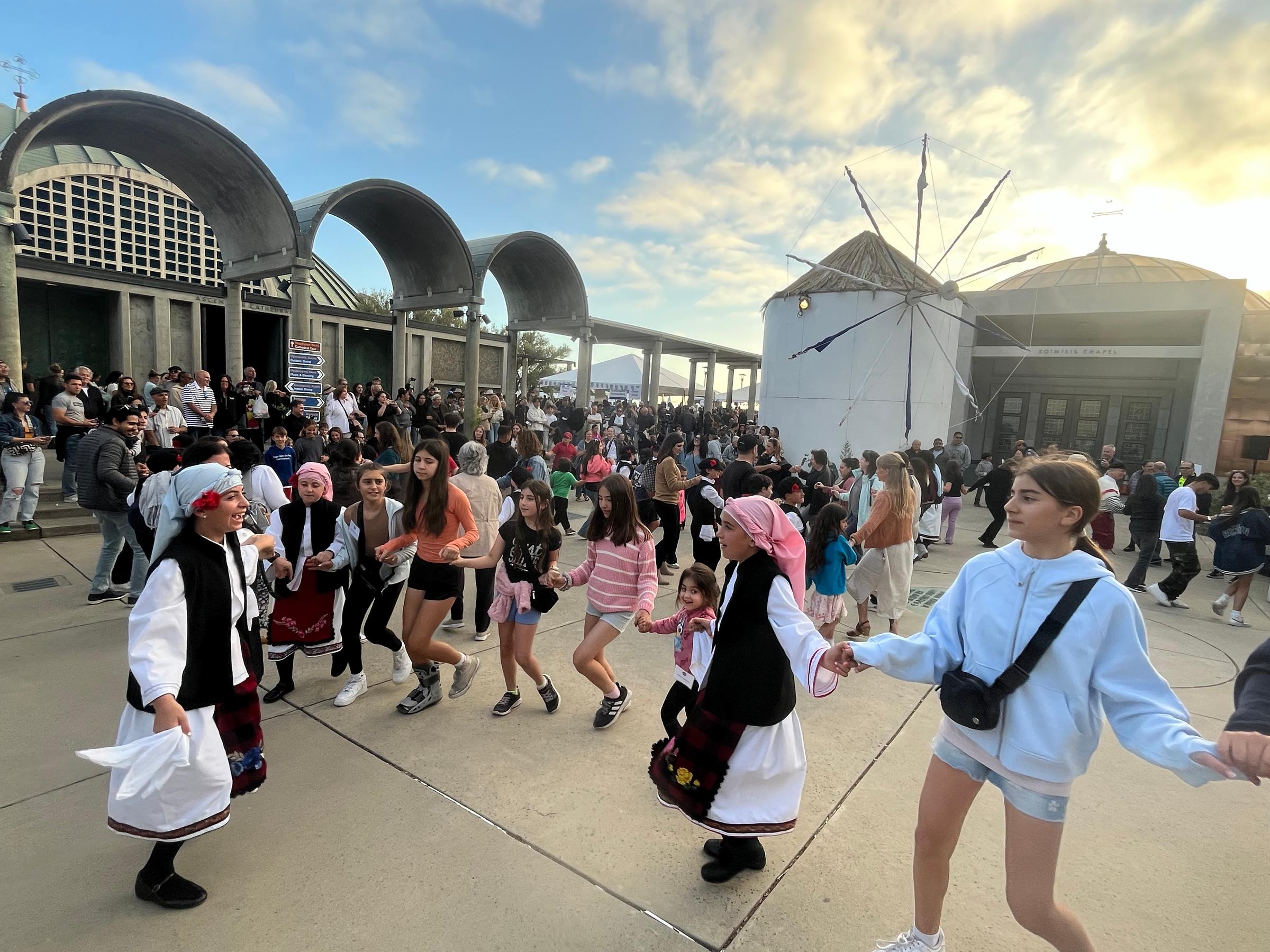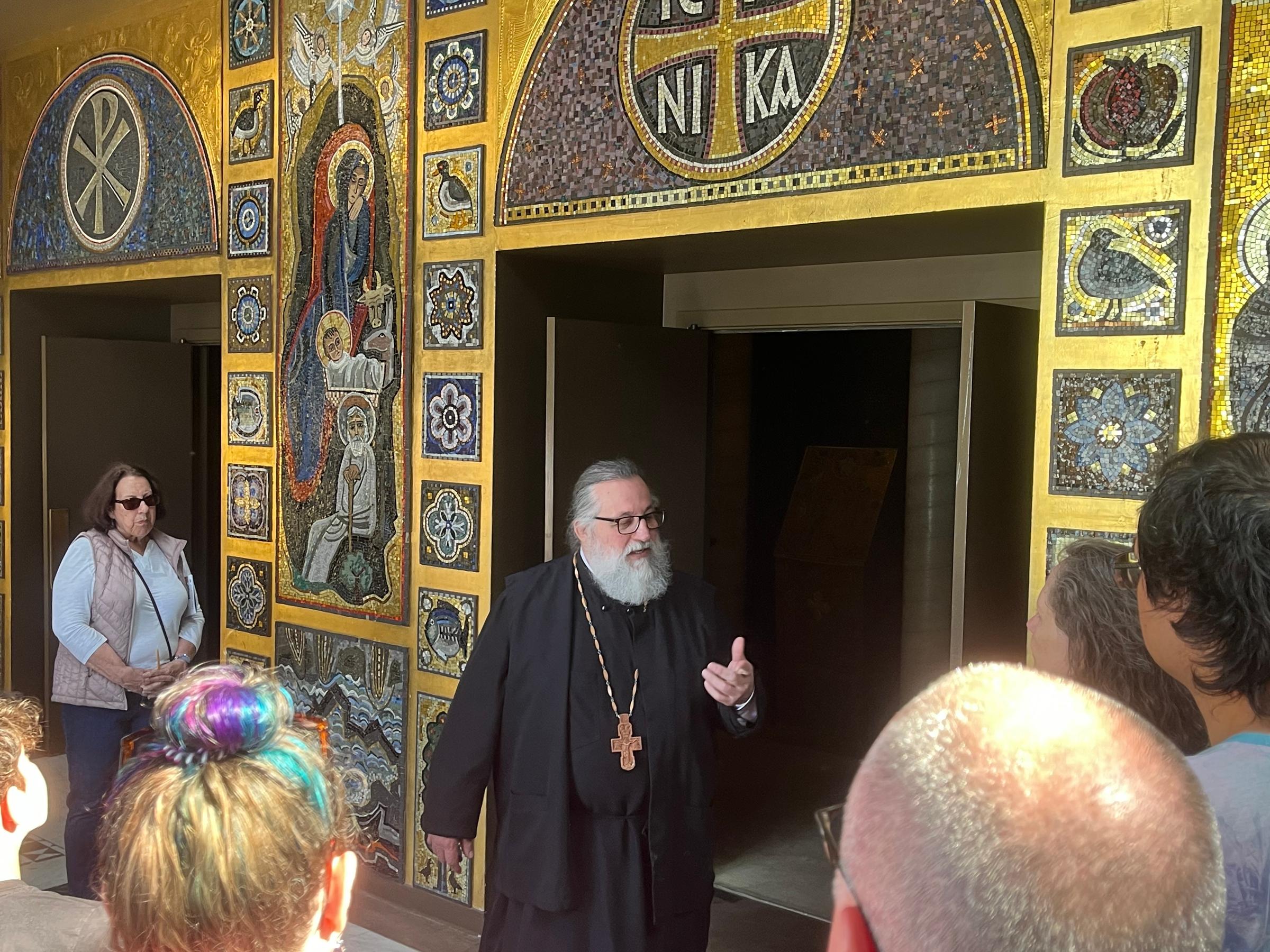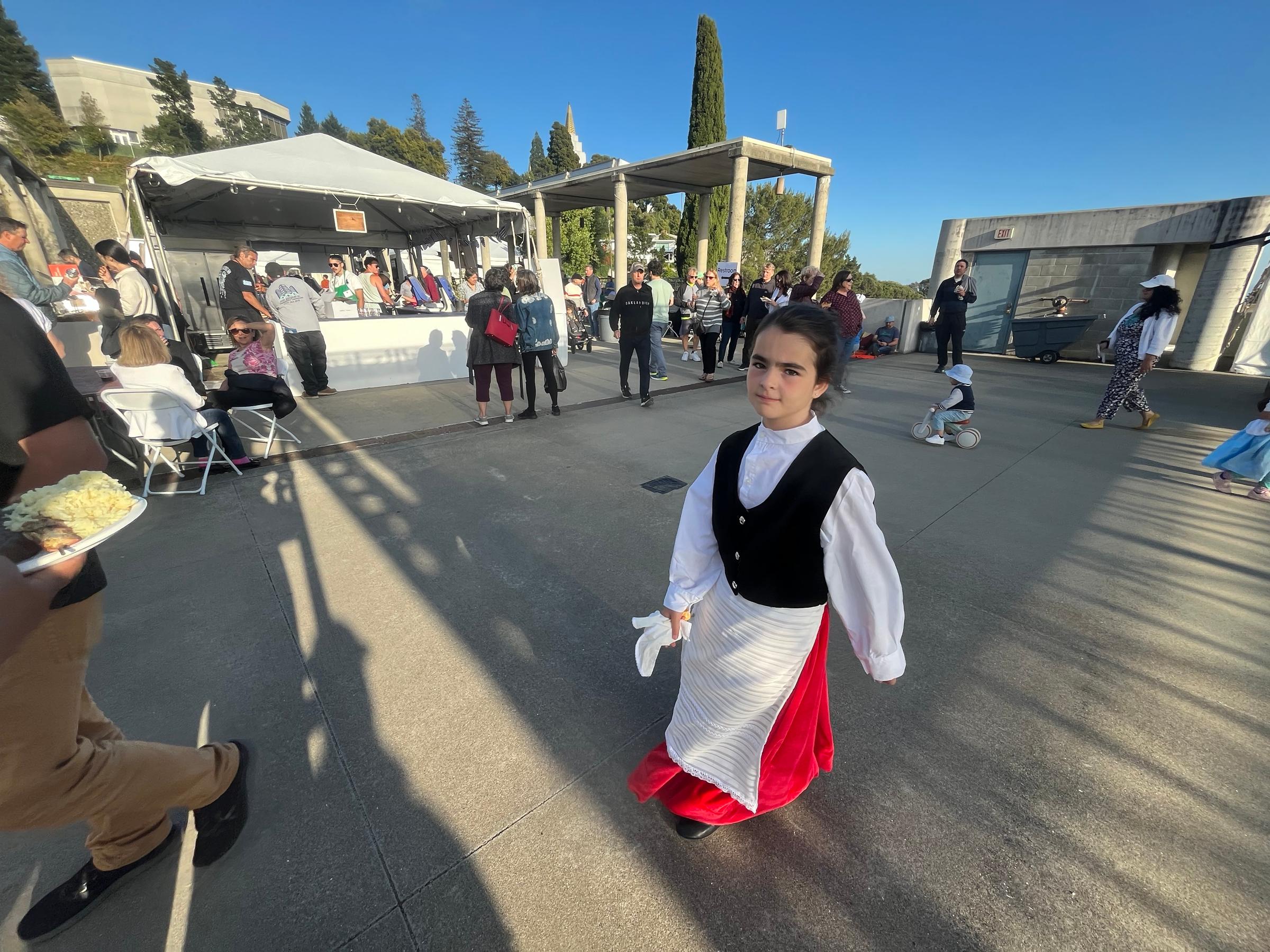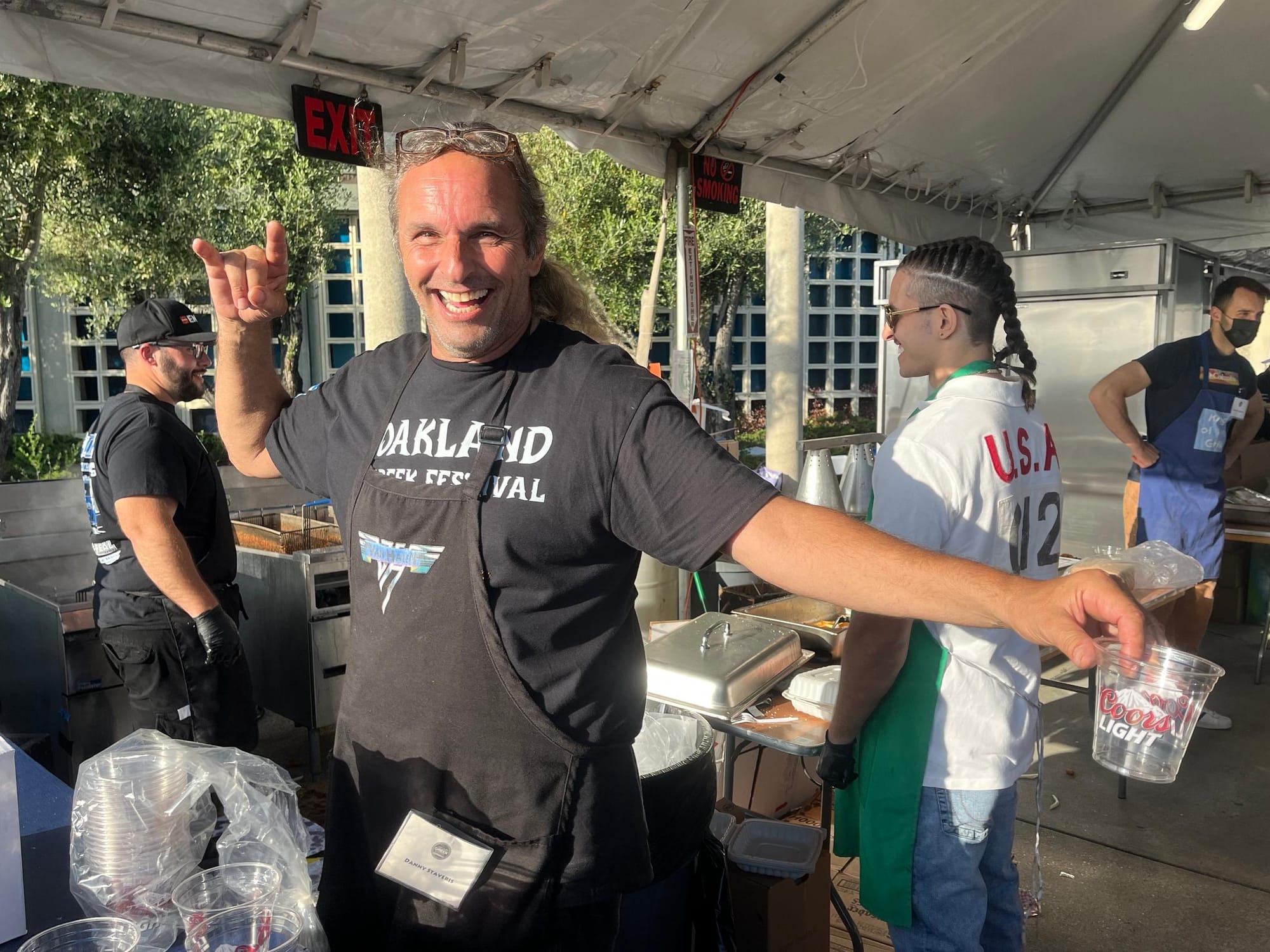Oakland Greek Festival
Greek Orthodox Cathedral of the Assumption
4700 Lincoln Avenue, Oakland
OaklandGreekFestival.com
May 17, 18, 19, 2024
So you’re walking around the expansive campus of the Greek Orthodox Cathedral of the Assumption at the Oakland Greek Festival and the smell of calamari — καλαμάρια — draws you forward. The hyper-energetic dude at the booth is wearing a Van Halen apron. “VH forever!” he exclaims, beaming a giant smile. How can you not smile back at that joyfulness of spirit?
The festival, now in its 52nd year, brims with smiles. Everyone is Greek at the annual three-day celebration, its amity energetic and open. Throngs of people of every age stroll through the platia, plaka, agora, taverna, and kafenion, listening to the festival’s music, browsing Greek crafts, watching traditional dances, drinking wine and Greek beer, and – above all – eating. The mingling aromas of gyros, souvlakia, halloumi, spanakopita, and loukomades all complement one another: uniquely mouthwatering in the way only the atmosphere a once-a-year outdoor fête can give.
But the thing is: we didn’t get the calamari! My partner doesn’t dig seafood the way I do. She wanted gyros. But I didn’t want those. So we compromised by going to the estiatorio which was in an enormous multi-purpose hall.

On offer at a long cafeteria-style serving counter was hearty food: half chickens, lamb shank, mousaka, pastitsio, keftethes (Greek meatballs), green beans, rice pilafi, and smaller dishes (Greek salad, olives, feta), and kouloura bread. The Mousaka possessed a nice, subtle sweetness that complimented its eggplant layers. The green beans were undercooked and slathered in tomato and not very good. But my favorite, the keftethes, had a deeply homemade spirit. Their flavor and the ambience of the huge gathering hall — a place where companionship and camaraderie are more important than how good the food is — made them just right.

We needed to get to the cathedral for a tour, so we finished eating more quickly than I would have liked and headed to the focal point of the campus: the beautiful domed church that’s the center of worship for more than 1,200 Greek Orthodox parishioners. The tour was led by the Rev. Father Thomas Zaferes, who’s served the cathedral since 2009. His deep grasp of Greek Orthodox theology and tradition, and his reverence and understanding of the gorgeous Byzantine and modern liturgical art within the sacred space, was fascinating and elucidating. Fr. Tom was an excellent guide, taking every question kindly and gracefully.

But what post-church experience is complete without sweets? The line for the loukomades was really long, everyone waiting for that most perfect of fair foods: sweet fried dough. But this was no funnel cake. Loukomades are little balls of dough, deep fried until golden then tossed with honey. Its attraction made bees of the anticipatory queue, including my partner. I don’t have much of a sweet tooth, but I must admit: these babies were pretty tasty.

After another stroll through the campus, we ended our visit by watching traditional dances performed by Koinonia (“Fellowship”), little dancers from kindergarten through second grade. Very cute. They were followed by the third through fifth graders, Aionia (“Eternity”) who had impressive moves for such young kids. The ages of the different dance troupes – there are over 100 dancers – range from three-years-old to over 50, performing folk dances from different regions of Greece.
The kefi (“spirit”) of the festival is full of warmth, generosity and goodwill. It’s a joy for the eyes, ears, tastebuds, and soul. We look forward to next year’s festival. Opa! (That’s Greek for “Van Halen Forever!”)







